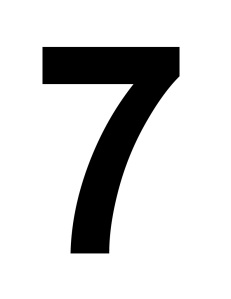WebQuest
Macroeconomic Policy
Process

Let's go...
- Aggregate Supply & Aggregate Demand Practice: Go To Section II- College Level Questions

- Based on the information in the graph above answer the following on a separate piece of paper...
- What is the relationship between Real GDP and Unemployment?
- Explain why this relationship exists...how does one lead to more less of the other (connection)? Please make sure you are very thorough and do not skip any steps with your explanation.
| Policy | Tools | Graph Affected? | During a Recessionary Gap? | During an Inflationary Gap? |
| Fiscal | 1.
2.
|
|
|
|
| Monetary | 1.
2.
3. 4.
|
|
|
|
Look at & listen to the 5 documented recessions & answer the following for EACH of the 5 time periods on a separate piece of paper...
- What was the major problem(s) with each recession (state of the economy)? Briefly explain.
- What type of economic policy was used for each? What were the "tools" used? Be specific!
1. What is the time period portrayed in the video of the "The Decline: Geography of a recession?"
2. What was the unemployment rate at the start of the video? Which types of the unemployment are present when the unemployment rate is this low?
3. At the beginning of the video, which three states have the highest levels of unemployment? Give an educated explanation as to why this is so...
4. What happens as you progress through the video? Which type of unemployment is growing? Explain.
5. Which areas of the country seemed to be unaffected by the recession? Give an educated explanation as to why this is so...
Finally, visit GEO FRED to get an update on the unemployment rates for each state.
1. How does the economy look today? Explain.
2. What is the unemployment rate in your state (click on the state)? What types of Unemployment exist?Explain.
3. Which states have the lowest unemployment rate? Why do you think this is so?
4. What is Full Employment?Are any of the states fully employed? How do you know?
- Perform Activity 6: Spending Multiplier...These are just like your test questions!!
- Fix The Federal Budget...if you have questions about each expenditure click on the "Learn more" after each. Click on "Next" at the bottom of the page.
- What is the goal of the activity? Short term and long term? Why?
- Which areas of the Federal Budget did you decrease spending? Explain why you decided to do this.
- Were there any areas in which you increased the Federal Budget? Explain why you decided to do this.
- Did you reach the goal (from #1)? Why or why not?
Part 3
Watch the following video on Exchange Rates:
A little Exchange Rate Practice....go to the Grokking Econ practice page and write down your answers on a separate piece of paper (no need to draw the graphs!).
- Exchange Rates Practice -Please do 1, 2, & 3 only!

Assume the economy is fully employed and is in long-run equilibrium. Read the scenarios and answer the questions that follow:
i. Full employment is $250 trillion.
ii. The economy is currently producing at $350 trillion and the MPC is .80.
1. Graph the current state of the economy from part A.
2. Explain an event that might have caused the problem stated in A.
3. Which fiscal policy solutions would move the economy towards full employment and price stability? Would this cause a short run deficit or surplus? Explain.
4. What is the spending multiplier? Tax multiplier?
5. How much would government spending have to change to fix the "Gap?" Taxes?
6. Show the result of the implementation of your policies stated above in #3 on the graph you drew for #1.
7. Explain what would happen to the economy in the long-run if no interventions were implemented.
The Public URL for this WebQuest:
http://zunal.com/webquest.php?w=182073
WebQuest Hits: 4,160
Save WebQuest as PDF